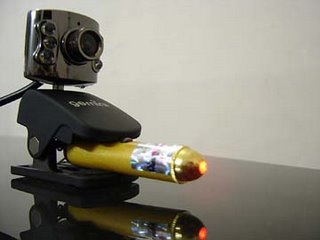A static routing occurs when you manually add routes in each Router’s Routing table, Routing table should create, maintain, and update by a network administrator, manually. A static route to every network must be configured on every router for full connectivity. This provides a granular level of control over routing, but quickly becomes impractical on large networks. Routers will not share static routes with each other, thus reducing CPU/RAM overhead and saving bandwidth. However, static routing is not fault-tolerant, as any change to the routing infrastructure (such as a link going down, or a new network added) requires manual intervention. Routers operating in a purely static environment cannot seamlessly choose a better Route if a link becomes unavailable. Static routes have an Administrative Distance (AD) of 1, and thus are always preferred over dynamic routes, unless the default AD is changed. A static route with an adjusted AD is called a floating static route.
Command Syntax for Static Routing on Cisco Router
The syntax for the global configuration command used to enter a static route is:
ip route {destination prefix} {destination prefix mask} {Exit interface OR Next hop IP address} {Administrative Distance} {Permanent}
The following briefly outlines the advantages and disadvantages of static routing:
Advantages of Static Routing:
1. Minimal CPU/Memory overhead
2. There is no bandwidth update between Routers, which means you will save bandwidth on WAN links.
3. It adds security because the administrator can choose Routing access to certain networks only.
Disadvantages of Static Routing:
1. If any Infrastructure changes must be manually adjust the configuration in complete network.
2. No “dynamic” fault tolerance if a link goes down
3. Administrator must understand the complete internetwork and how each Router connected to configure properly.
4. Impractical on large network
Dynamic Routing:
A Dynamic Routing is when protocols are used to find networks and update Routing tables on Routers. A dynamic routing table is created, maintained, and updated by a routing protocol running on the router. Examples of routing protocols include RIP (Routing Information Protocol), EIGRP (Enhanced Interior Gateway Routing Protocol), and OSPF (Open Shortest Path First). Routers do share dynamic routing information with each other, which increases CPU, RAM, and bandwidth usage. However, routing protocols are capable of dynamically choosing a different (or better) path when there is a change to the routing infrastructure.
Difference between Routing Protocols and Routed Protocols
Do not confuse routing protocols with routed protocols:
A routed protocol is a Layer 3 protocol that applies logical addresses to devices and routes data between networks (such as IP)
A routing protocol dynamically builds the network, topology, and next hop information in routing tables (such as RIP, EIGRP, etc.)
The following briefly outlines the advantages and disadvantages of dynamic routing:
Advantages of Dynamic Routing:
1. Simpler to configure on larger networks
2. Will dynamically choose a different (or better) route if a link goes down
3. Ability to load balance between multiple links
Disadvantages of Dynamic Routing:
1. Updates are shared between routers, thus consuming bandwidth
2. Routing protocols put additional load on router CPU/RAM
3. The choice of the “best route” is in the hands of the routing protocol, and not the network administrator.
Default Routing:
A default routing is used only when one exit path from the Router. Default Routing can configure like a static route with the ip route command, but use 0.0.0.0 0.0.0.0 for the IP network and subnet mask followed by the next hop router’s IP address or Exit interface of the local Router. Have to also use the ip classless command since there aren’t any routes in the routing table. ip classless is enabled by default in IOS version 12.
Command Syntax for Default Routing on Cisco Router
Router(config)# ip route 0.0.0.0 0.0.0.0 192.168.1.2
Router(config)# ip classless











